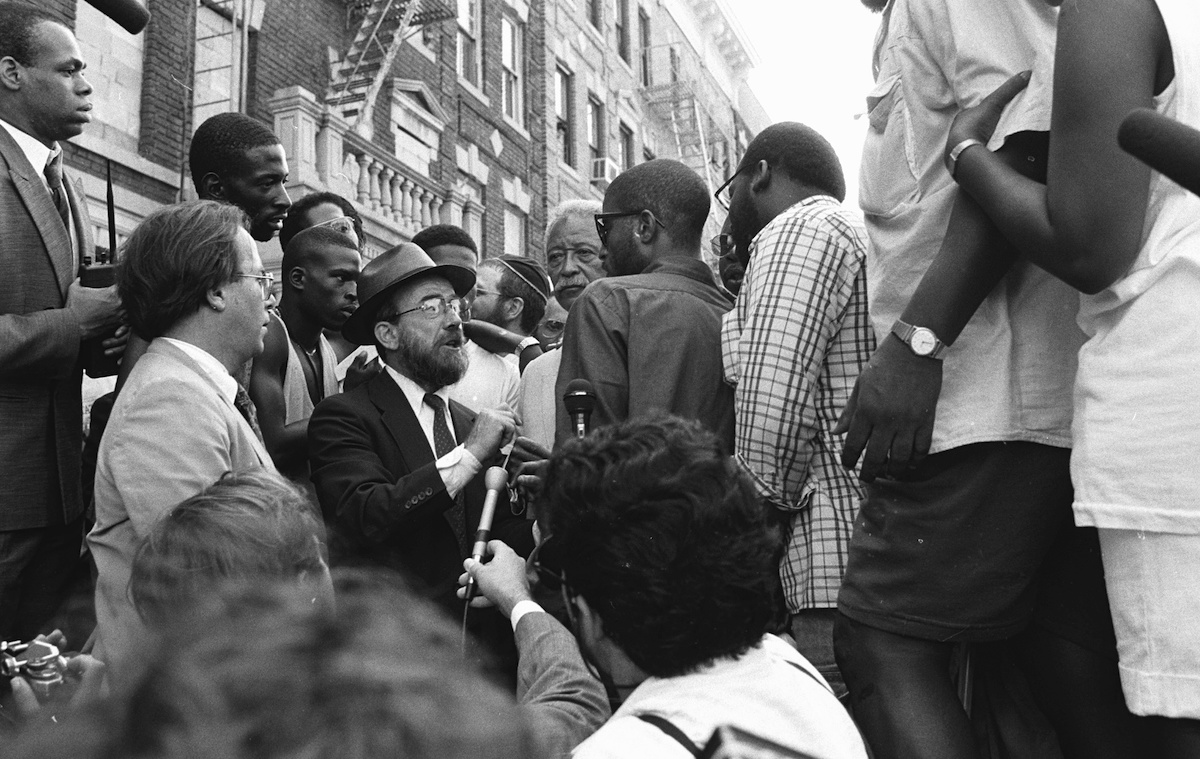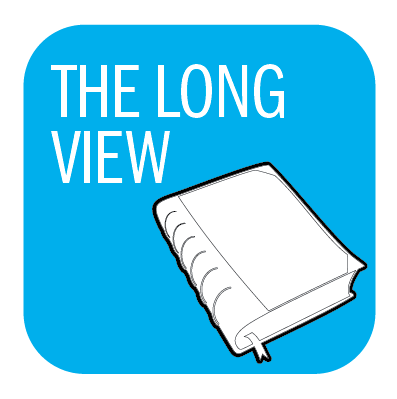
When the Movement for Black Lives released its long-anticipated policy platform earlier this month, attention quickly fell on the Invest-Divest section of the document, which called “for the U.S. government to divest from military expenditures and U.S. aid to the State of Israel.” The authors of the section, Benjamin Ndugga-Kabuye, NYC Organizer for Black Alliance for Just Immigration and Rachel Gilmer, Chief of Strategy for Dream Defenders, also chided the American government for being complicit in the Israel “apartheid” state and “genocide” of Palestinians.
Though organizations such as the Jewish Voice for Peace and the Jews of Color Caucus have released statements supporting the platform, other prominent members of the Jewish community have repudiated Black Lives Matter. Attorney Alan Dershowitz in a recent Boston Globe article called the use of the term “genocide” anti-Semitic and admonished the organization to “remove this blood libel from its platform.” Rabbi Dan Dorsch, writing for Haaretz, contended that the reference to “Apartheid Israel” and inserting the Israeli-Palestinian conflict “within the context of serious discussions of racial inequality in America” seemed to him “to be chutzpahdik, if not entirely out of bounds.”
This month also marks the 25th anniversary of another major clash between American black and Jewish communities: the rioting that swept the Crown Heights neighborhood of Brooklyn between Aug. 19 and Aug. 21, 1991. As that conflict is remembered and today’s is debated, it is worth remembering that, in fact, the alliance between those communities has been troubled for a long time—but it has nevertheless endured.
MORE: Read TIME’s Report on the Crown Heights Riots of 1991
As Ndugga-Kabuye stated in an interview with The Times of Israel, “Jewish reactions to the platform recalled the later years of the 1960s civil rights movement, when white and black allies split over tactics and ideology.”
As Cheryl Lynn Greenberg notes in her book Troubling The Water: Black-Jewish Relations in the American Century, the 1965 iconic image of Rabbi Abraham Joshua Heschel and Dr. Martin Luther King Jr. marching together from Selma to Birmingham is representative of what many perceive as the heyday of Black-Jewish alliance, when the two fought side by side in the struggle for civil rights. The pairing made sense to many: though their pasts were very different, both populations had firsthand knowledge of 20th-century oppression. As Dr. King’s confidante Andrew Young stated in an interview, “There has always been a natural kinship [among civil-rights leaders] with the Jewish community. . . I mean the movement was Jewish in the sense that our songs were ‘Oh Pharaoh, Let My People Go,’ ‘Joshua Fit the Battle of Jericho.”
Greenberg, however, challenges this representation, contending that “cooperation and conflict coexisted throughout, with tensions caused by economic clashes, ideological disagreements, Jewish racism and black anti-Semitism, as well as differences in class and the intensity of discrimination faced by each group.”
As the movement toward Black Nationalism emerged, as a result of disillusionment with the slow gains of the Civil Rights Movement, organizations such as SNCC drew parallels between the black-liberation struggle and the larger international struggle against white colonialism. They argued that black ghettoes in the U.S. were similarly colonized. Regarding the Middle East, SNCC and other radical groups lambasted Israel as a “European-style oppressor of non-white Palestinians.”
Black Nationalism would soon transform into a Black International consciousness.
Keith P. Feldman, in A Shadow Over Palestine: The Imperial Life of Race in America, correlates the emergence of Black Internationalism with what some believed to be “the ‘tragic pro-Arab’ wedge between American Jews and Black liberation struggles.” In response to what many perceived as atrocities committed against Palestinians during the Six-Day War in June of 1967, the SNCC newsletter published in August featured a two-page article titled “The Third World Round-Up; The Palestine Problem: Test Your Knowledge” containing “documented facts” that contextualized the Black freedom struggle within an international framework “through a complex and sustained engagement with Palestine.” SNCC spokesperson Ralph Featherstone well understood the risk of its publication, stating, “Some people might interpret what we say as Anti-Semitic.”
Feathersone’s prediction was correct. The New York Times, in a front-page article titled “S.N.C.C. Charges Israel Atrocities: Black Power Group Attacks Zionism as Conquering Arabs by ‘Massacre,’” lambasted the organization by calling its rhetoric “hate filled” and mourning the passing of Black-Jewish cooperation.
Get your history fix in one place: sign up for the weekly TIME History newsletter
The then-general counsel of the Antidefamation League of B’nai B’rith, Arnold Forster, concurred. “It is a tragedy that the civil rights movement is being degraded by the injection of hatred and racism in reverse,” he said. “This newsletter follows the pro-Arab, Soviet, and racist lines and smacks very heavily of anti-Semitism.” Despite the repudiation SNCC received after that publication, from prominent civil rights leaders such as Dr. King and A. Philip Randolph of the Southern Christian Leadership Conference, and Whitney M. Young of the National Urban League, the rift between Black and Jewish activists seemed also irreparable.
As Peniel Joseph stated in Waiting ‘Til the Midnight Hour: A Narrative History of Black Power in America, “Palestine as a colony and its people as a community of color under siege, produced an uncomfortable stalemate in which representatives of the two longstanding minority groups attacked each other as racist and anti-Semitic.”
The current controversy is a continuation of the challenge of Black-Jewish alliance as elements within both populations face an ideological impasse. While many are once again eulogizing the loss of solidarity, such sentiment appears premature. History is on the side of those who see an alliance continuing: whether in the 1960s or the 1990s, conflicts that have arisen in the past have never led to a complete fissure. African Americans and Jewish Americans still tend to share political affiliations, and the reasons they might share priorities are as pertinent as ever. Less than two weeks after BLM released its platform, Mondoweiss, a newsletter that focuses on the Middle East, reported on “the largest-ever Jewish demonstration for #BlackLivesMatter” which convened in Greenwich Village, New York City. When asked by reporter Wilson Dizard about the controversy, Jason Salmon, a leader in Jews for Racial & Economic Justice (JREJ) responded as he was led away by police for disorderly conduct, “Minority groups in this country have been pitted against each other since the beginning. Since the inception of this country. I’ve just had it.”

Historians explain how the past informs the present
Arica L. Coleman is the author of That the Blood Stay Pure: African Americans, Native Americans and the Predicament of Race and Identity in Virginia and chair of the Committee on the Status of African American, Latino/a, Asian American, and Native American (ALANA) Historians and ALANA Histories at the Organization of American Historians.
More Must-Reads from TIME
- Introducing the 2024 TIME100 Next
- The Reinvention of J.D. Vance
- How to Survive Election Season Without Losing Your Mind
- Welcome to the Golden Age of Scams
- Did the Pandemic Break Our Brains?
- The Many Lives of Jack Antonoff
- 33 True Crime Documentaries That Shaped the Genre
- Why Gut Health Issues Are More Common in Women
Contact us at letters@time.com